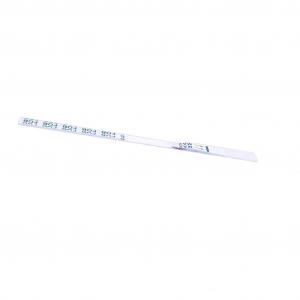

Add to Cart
Medical Diagnosis Prostate specific antigen (PSA) Qualitative Rapid Test Kits For Prostate Cancer Risk
| Product features | Parameters |
| Principle | Chromatographic Immunoassay |
| Format | Cassette |
| Specimen | WB/S/P |
| Certificate | Q |
| Reading Time | 5 minutes |
| Pack | 10T/25T |
| Storage Temperature | 2-30°C |
| Shelf Life | 2 Years |
| Sensitivity | 99.00% |
| Specificity | 99.20% |
| Accuracy | 99.10% |
| Cut-Off | 4 ng/mL |
Applications:
Description:
Prostate cancer is the one of the most common types of cancer found in man. The incidence of prostate cancer increases with age and accounts for a growing number of newly diagnosed patients. Prostate specific antigen (PSA) is produced primarily in the prostate gland and is secreted into the prostate ducts and at ejaculation serves to liquefy the seminal coagulum. Virtually all healthy males under 50 years of age have PSA concentration under 4.0 ng/ml. If PSA level is above 20 ng/ml, the patient most likely to have prostate cancer. Some studies indicated that elevated total PSA levels are found in serum from patients who have prostate cancer cells metastasized throughout their bodies. Other studies indicated that Free PSA, which can not foam a complex with serine protease tends to be more abundant in patients with benign prostatic hyperplasia. Rapid PSA test use antibodies which can equally recognize both free PSA and PSA-ACT complex
How to use?
Allow the test, specimen, buffer and/or controls to reach room
temperature (15-30°C) prior to testing.
1. Bring the pouch to room temperature before opening it. Remove
the test cassette from the sealed pouch and use it as soon as
possible.
2. Place the cassette on a clean and level surface.
For Serum ,Plasma or Venipuncture Whole Blood specimens:
· Hold the dropper vertically and transfer 1 drop of serum or
plasma (approximately 40ul) or 2 drops of venipuncture whole blood
(approximately 80 ul) to the specimen well (S) of test cassette,
then add 1 drop of buffer (approximately 40 ul) and start the
timer. See illustration below.
For Fingerstick Whole Blood specimen:
· To use a capillary tube: Fill the capillary tube and transfer
approximately 80 ul of fingerstick whole blood specimen to the
specimen well (S) of test cassette, then add 1 drop of buffer
(approximately 40 ul) and start the timer. See illustration below.
· To use hanging drops: Allow 2 hanging drops of fingerstick whole
blood specimen (approximately 80 ul) to fall into the specimen well
(S) of test cassette, then add 1 drop of buffer (approximately 40
ul) and start the timer. See illustration below.
3. Wait for the colored line(s) to appear*. Read results at 5
minutes. Do not interpret the result after 10 minutes.
*Note: if migration is not observed in the result window after 30
seconds, add one or two extra drops of buffer.
Note: It is suggested not to use the buffer, beyond 6 months after
opening the vial.
| Cat. No. | Product | Specimen | Pack |
| TPS-Q401 | PSA Qualitative Rapid Test Dipstick | WB/S/P | 25 T |
| TPS-Q402 | PSA Qualitative Rapid Test Cassette | WB/S/P | 10 T |
| TPS-402 | PSA Rapid Test Cassette | WB/S/P | 10T |
